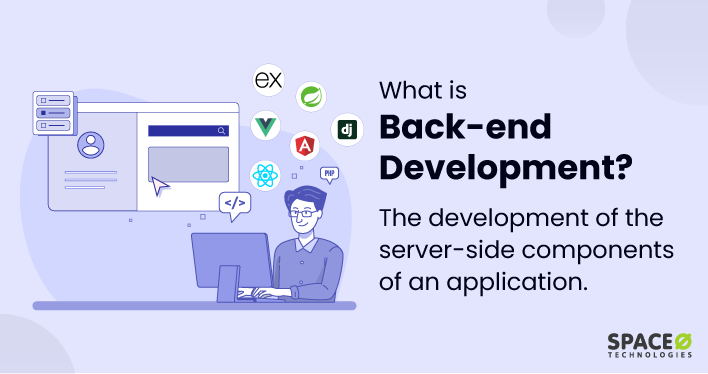Unveiling the Secrets of Ghosted Domains
Explore the intriguing world of expired domains and online opportunities.
Back-End Development: Where Your Code Meets the Dark Side
Uncover the secrets of back-end development and explore the code that powers the web—dare to enter the dark side of programming!
Understanding APIs: The Bridge Between Front-End and Back-End Development
In the world of web development, APIs (Application Programming Interfaces) serve as a crucial link between front-end and back-end systems. They allow different software components to communicate effectively, providing a structured way to exchange data. For instance, when a user interacts with a web application—clicking a button or submitting a form—the front-end sends a request to the back-end API, which processes the request and returns the appropriate data response. This seamless interaction is what enables features like user authentication, data retrieval, and dynamic content updates, thus enhancing the overall user experience.
Understanding how APIs function can significantly improve your development skills. Here are some key components of APIs that highlight their importance:
- Endpoints: These are the specific URLs where API requests are directed.
- Requests and Responses: The communication between front-end and back-end occurs through JSON (JavaScript Object Notation) or XML formats.
- Authentication: APIs often require secure methods to ensure that only authorized users can access certain data.
By mastering these components, developers can create more scalable and efficient applications, bridging the gap between front-end and back-end development.

Databases Demystified: How Back-End Systems Store and Retrieve Data
Understanding how databases function is crucial for anyone involved in back-end development. At its core, a database is an organized collection of data, which enables efficient storage, retrieval, and management. The most common types of databases are relational databases, which use tables to maintain relationships between data points, and NoSQL databases, designed for more flexible and scalable data storage. Key components of a database system include the database engine, which handles the database's operations, and the database schema, which defines the structure of the data within. This framework allows developers to manipulate data with simple commands through SQL (Structured Query Language) or other query languages, making it easier to execute complex queries and manage large datasets.
When discussing how data is retrieved in back-end systems, it's essential to explore the process known as CRUD, which stands for Create, Read, Update, and Delete. Each of these operations facilitates different interactions with the database: Create adds new entries, Read retrieves existing data, Update modifies data, and Delete removes it. Understanding these operations is fundamental to effective database management and application performance. Additionally, techniques such as indexing and caching optimize data retrieval, ensuring that applications remain responsive even under heavy loads. As we demystify these concepts, it becomes evident that a well-crafted database system is the backbone of any robust back-end architecture.
Common Back-End Security Risks: Protecting Your Code from the Dark Side
In the world of software development, back-end security risks are often lurking in the shadows, waiting to exploit vulnerabilities and compromise sensitive information. One of the most prevalent issues is SQL injection, where attackers manipulate your application's database through malicious SQL code. This can lead to unauthorized access to user data, which emphasizes the importance of using prepared statements and parameterized queries. Additionally, improper authentication practices can expose your system to attacks. Ensure that you are implementing robust password policies and utilizing multi-factor authentication to protect user accounts from being compromised.
Another significant threat is server-side vulnerabilities, where flaws in your server configuration can be exploited to gain unauthorized access. Regularly updating and patching your server software is crucial in mitigating risks, as outdated software leaves your application exposed to known exploits. Furthermore, insufficient logging and monitoring can hinder your ability to respond to attacks. Implement comprehensive logging practices that allow you to detect and analyze unauthorized access attempts, ensuring you can react promptly to any suspicious activity. By addressing these common back-end security risks, you can fortify your code against potential threats from the dark side.